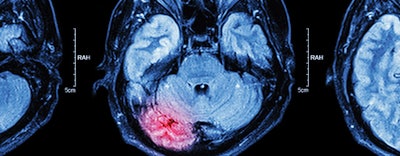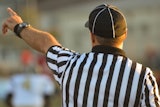
The science community's understanding of head trauma is rapidly evolving, and with that understanding comes improvements in the diagnosis and treatment of sports-related concussions, as well as advancements in player protection. As the science continues to improve, it is impacting the insurance needs and risk management practices of sports teams and leagues.
Big league impact
For insurers, the impact of most sports injuries is fairly easy to evaluate. The costs associated with a separated shoulder are well known, for example. But for brain injuries, that simply isn't the case. If a player sustains a sports-related concussion, it could be years before that injury's long-term effects are evident. For chronic traumatic encephalopathy (CTE), athletes often begin showing symptoms between the ages of 35 and 45, with a typical latent period of approximately eight years between the last trauma and the appearance of symptoms.
That latent exposure represents an emerging concern for sports organizations and leagues. The NHL just announced a tentative $18.9 million settlement with more than 300 retired players involving concussion litigation. It did not acknowledge any liability for the players' claims in the proposed agreement. The league in this case argued that there is no definitive causal link between concussions sustained by players and the later development of neurological disorders.
The NFL reached a $1 billion settlement with retired players who say they suffered head trauma or injuries during their careers that caused long-term neurological problems, including CTE, ALS (amyotrophic lateral sclerosis, or Lou Gehrig's disease), Parkinson's, Alzheimer's and dementia. Monetary awards have reached approximately $580 million in just two years, after the league originally estimated that it would take 10 years to pay out $400 million.
Schools exposed, too
These risks don't just impact professional sports. On the collegiate level, the NCAA reached a tentative settlement of $75 million in a class action suit that would provide medical monitoring funds and injunctive relief to student-athletes at risk for brain damage from repeated blows to the head. There are more than four million potential class members in the case.
This past summer, family members of a former college football player filed a lawsuit against the NCAA. The player, a former quarterback, finished his collegiate career in 2006 and was 30 at the time of his death. The lawsuit alleges that he was "knocked unconscious and suffered multiple concussions and/or sub-concussive impacts to the head during games and/or practice." It is just one of many concussion-related lawsuits filed against the NCAA, individual colleges and universities, and athletic conferences.
An attorney representing several families in suits filed against the NCAA told the Los Angeles Times, "Our goal is to take these to trial. Our clients want to get in front of a jury. We think a jury is going to act very favorably to the stories that they have, and we want to get there as soon as we can."
Sports-related concussion litigation also is filtering down to high schools and youth leagues. A California school district recently settled a case involving an incident that occurred during a freshman football game in 2013. The lawsuit argued that delays in diagnosing and treating the player caused him to suffer a variety of symptoms related to traumatic brain injury. The plaintiff received a settlement of more than $7 million from the district's risk management authority.
That is becoming a common pattern of litigation — failure to warn players of the possible risks, failure to protect them from head injuries, failure to diagnose and treat suspected head injuries properly, and failure to train coaches and staff properly.
Are you covered?
It is cases like these — along with the uncertainty and unpredictability of the issues presented by sports-related concussions — that are creating a challenging and restrictive marketplace. Some liability insurers are providing coverage but with concussion-related limitations, while others include complete exclusions. Some insurers are providing coverage for non-contact sports such as tennis or golf but not for collision sports such as football or hockey. A few insurers remain silent with respect to coverage, neither excluding nor endorsing coverage on their policy.
It's important to note that, while concussions are most commonly associated with football, it is not actually the sport with the most concussion-related injuries. According to the National Safety Council, the following sports have the highest rates of concussion-related injuries:
• Ice hockey – 12 percent
• Snowboarding – 10 percent
• Water tubing – 9 percent
• Football – 8 percent
• Lacrosse – 8 percent
• Horseback riding, rugby and wrestling – 7 percent
It is highly beneficial for sports organizations to purchase coverage that does not specifically exclude or eliminate coverage for key risks such as head trauma or concussions. The cost is much higher, but insurance that doesn't exclude coverage for concussions and head trauma is an immense value to an organization's balance sheet.
In addressing their coverage needs, sports leagues, teams and organizations would be best served by working with advisors who have a deep and longstanding history in sports industry risk management and insurance coverage. The issues surrounding concussion-related sports injuries are constantly and rapidly evolving, and it is crucial to work with experts who apply benchmarking and analytics to quantify risk so that an organization can make more-informed decisions.
As important as it is to monitor trends and look to the future, it's also important to be able to look into the past. As sports organizations face claims from players who were on the field in the past, it is vital to have an insurance advisor who has the ability to utilize insurance archeology and research coverages at the time of injury. This service is a tremendous advantage. An organization may not be aware that it has existing assets and a potential funding mechanism for claims from players who participated years or even decades ago.
When it comes to concussions and sports, researchers are making tremendous strides in understanding the connection between head trauma and long-term impacts on the human brain. Leagues and teams have also taken and continue to take steps to improve player safety. What we don't know is what the future holds for sports-related concussion claims, and because of that, organizations are strongly advised to protect themselves through comprehensive risk management and appropriate insurance coverage.
Bob Murphy is a managing partner for Insurance Office of America and leader of its global sports and entertainment industry practice.
This article originally appeared in the January | February 2019 issue of Athletic Business with the title "Emerging latent exposure highlights the need for concussion coverage." Athletic Business is a free magazine for professionals in the athletic, fitness and recreation industry. Click here to subscribe.




































